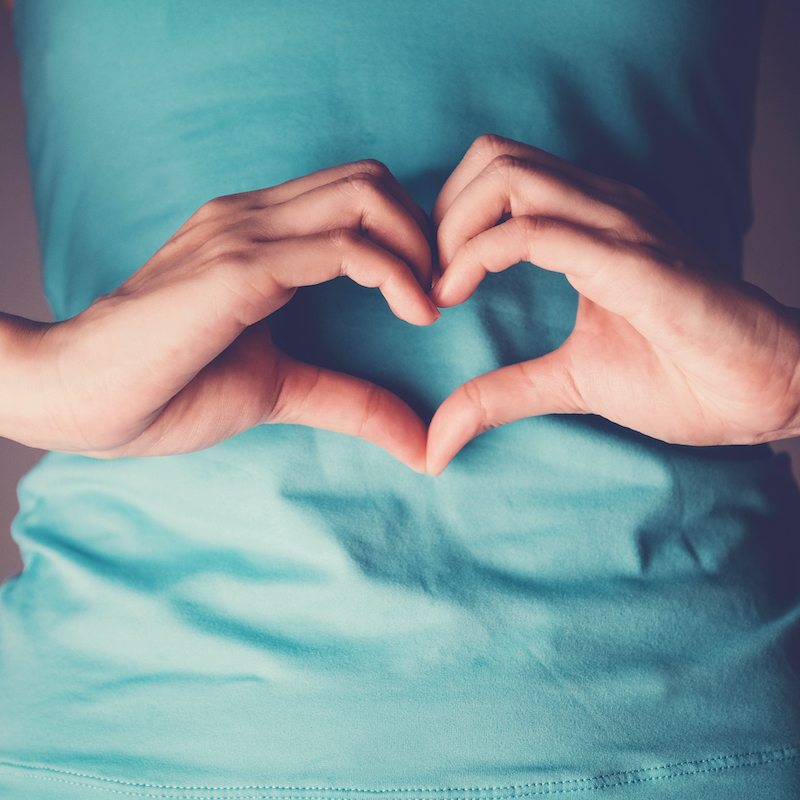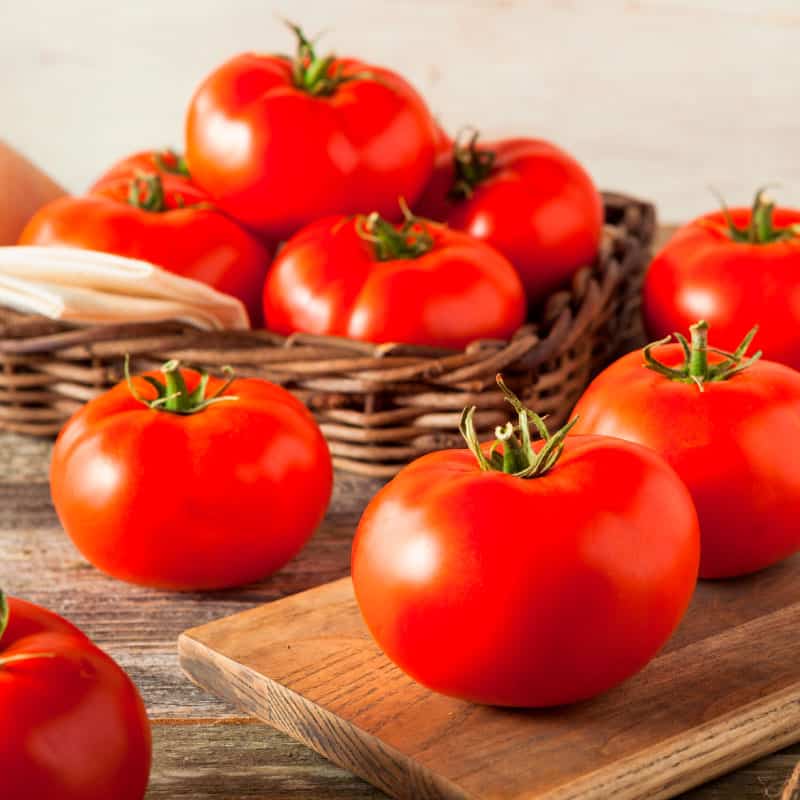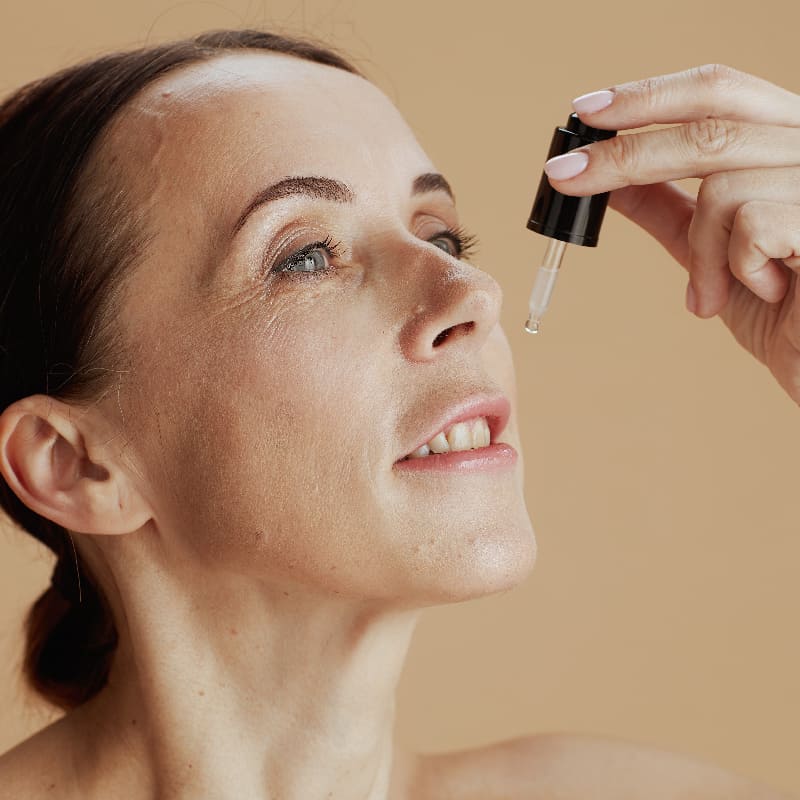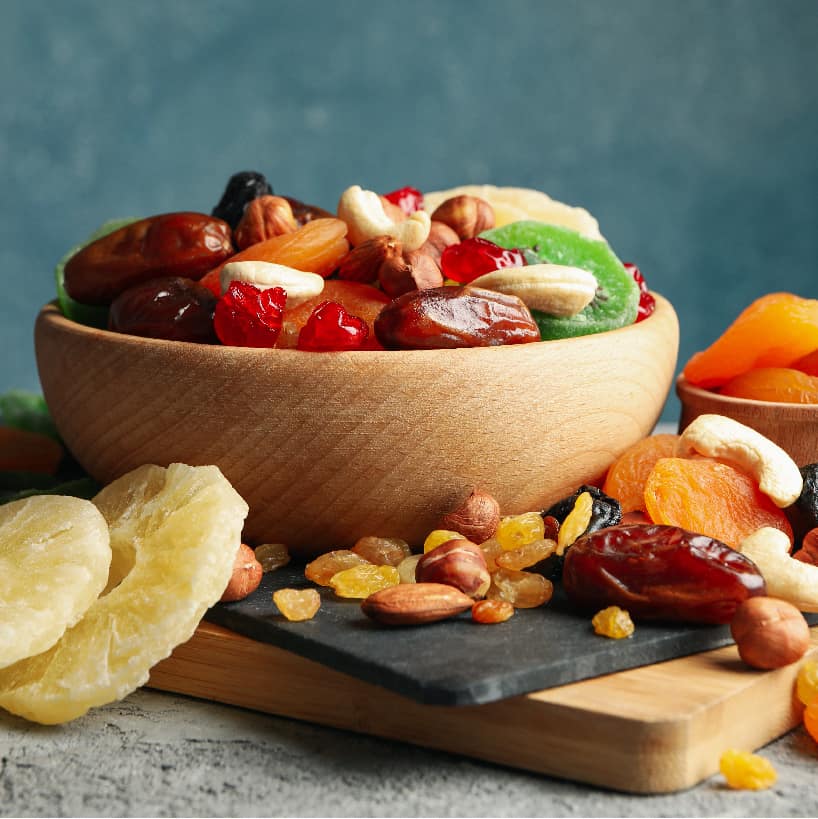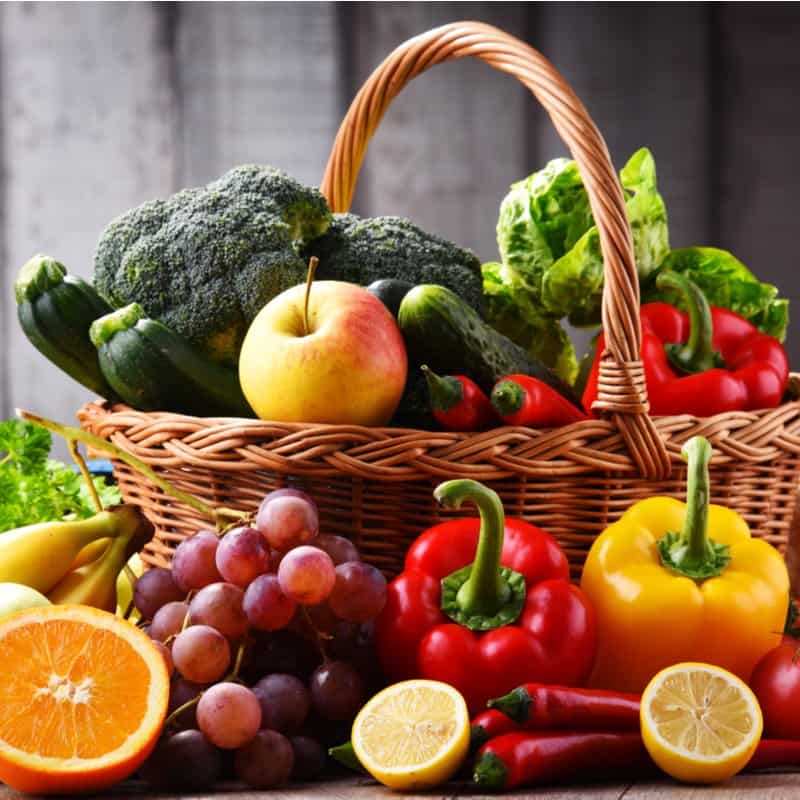This Dr. Axe content is medically reviewed or fact checked to ensure factually accurate information.
With strict editorial sourcing guidelines, we only link to academic research institutions, reputable media sites and, when research is available, medically peer-reviewed studies. Note that the numbers in parentheses (1, 2, etc.) are clickable links to these studies.
The information in our articles is NOT intended to replace a one-on-one relationship with a qualified health care professional and is not intended as medical advice.
This article is based on scientific evidence, written by experts and fact checked by our trained editorial staff. Note that the numbers in parentheses (1, 2, etc.) are clickable links to medically peer-reviewed studies.
Our team includes licensed nutritionists and dietitians, certified health education specialists, as well as certified strength and conditioning specialists, personal trainers and corrective exercise specialists. Our team aims to be not only thorough with its research, but also objective and unbiased.
The information in our articles is NOT intended to replace a one-on-one relationship with a qualified health care professional and is not intended as medical advice.
Lotus Root: The Herb that Supports the Brain, Gut & Heart
January 6, 2024
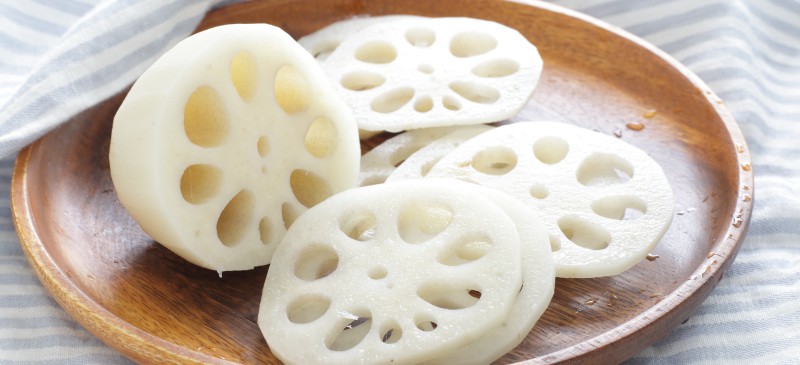
You are probably familiar with the image of the sacred lotus that sits beautifully on pond water and symbolizes beauty and rebirth, but how often do you think about the roots of the lotus that stretch deep into the mud? The lotus root is an edible stem that is often used in Asian cuisine.
Like burdock root, lotus rhizomes contain powerful antioxidants that help protect us from disease, and its nutrients boost the health of our digestive and cardiovascular systems. Just like another disease-fighting root called galangal, eating lotus root may help support brain health and reduce inflammation.
The root of the lotus can be used in an array of recipes, from salads to soups and stir fries. When peeled and sliced, it has a slightly nutty flavor and a nice, crunchy bite.
If you haven’t tried cooking with this root yet, you’ll probably want to start once you read about its many health benefits.
What Is Lotus Root?
Lotus root is the long stem of the lotus plant. The lotus plant has the scientific name Nelumbo nucifera and belongs to the Nelumbonaceae family. The root, flower stalks and seeds are commonly used in Chinese and Japanese cuisine.
The tubular lotus root is found buried in swampy, anaerobic (lack of oxygen) sediment. It has oval holes for obtaining oxygen and allowing buoyancy in water. The tubular shape of the root is used for storing energy in the form of starch.
On the outside, lotus root is smooth and has a brownish yellow color. Internally, the root is white and has a crisp flesh.
Lotus root grows in strands, similar to the links of sausages, and the stem can grow up to four feet in length. You can find the roots and lotus flowers in muddy ponds and rivers.
This root is commonly sliced and pickled, sautéed or baked. It has a mildly sweet taste that’s been likened to that of water chestnuts with a nutty flavor and a texture similar to potato. Lotus root also has a satisfying crunch when it’s cooked, so it makes for an excellent snack (think lotus root chips) or addition to stir-fries.
The root is also used to make lotus root starch, or it’s dried to make a powder that’s used in Chinese medicine.
The lotus plant glows in fresh water in semitropical climates. It originated in India and was later introduced to nations spanning from Egypt to China about 2,000 years ago. In China, it is used extensively for food and sometimes for herbal medicine.
Lotus root harvest begins in August and lasts until it hits peak season in the fall, but you can find it year-round in Asian markets or larger grocery stores.
Traditionally in Japan and China, farmers would stand knee-deep in ponds and feel for the root of the lotus plant with their toes. Then they would dig the roots out by hand.
When the lotus flower blooms and the plant reaches maturity, it breaks apart and released its seeds through the holds in the flower’s pod. Then the seeds link to the bottom of the muddy water and establish new lotus plants — beginning the cycle again.
In addition to the root, the seeds are a major product in southern China, and the leaves are used in cooking as flavorings or as decorations.
Nutrition Facts
Lotus root’s nutritional values depend on whether we’re looking at the raw root or cooked.
One raw lotus root (about 115 grams) contains approximately:
- Calories: 85.1
- Total Carbohydrates: 19.8 g
- Fiber: 5.6 g
- Total Fat: 0.1 g
- Saturated Fat: 0.03 g
- Polyunsaturated Fat: 0.02 g
- Monounsaturated Fat: 0.02 g
- Trans Fat: 0 g
- Protein: 3 g
- Sodium: 46 mg (2% DV*)
- Vitamin C: 50.6 mg (56% DV)
- Copper: 0.3 mg (33% DV)
- Riboflavin: 0.3 mg (23% DV)
- Vitamin B6: 0.3 mg (18% DV)
- Thiamine: 0.2 mg (17% DV)
- Potassium: 639 mg (14% DV)
- Manganese: 0.3 mg (13% DV)
- Phosphorus: 115 mg (9% DV)
- Pantothenic Acid: 0.4 mg (8% DV)
- Iron: 1.3 mg (7% DV)
- Magnesium: 26.4 mg (6% DV)
- Calcium: 51.8 mg (4% DV)
- Folate: 15 mcg (4% DV)
*Daily Value: Percentages are based on a diet of 2,000 calories a day.
In addition, raw lotus root also contains some niacin, zinc and selenium.
A half-cup serving of boiled lotus root (approximately 60 grams) provides about:
- Calories: 39.6
- Total Carbohydrates: 9.6 g
- Fiber: 1.9 g
- Sugar: 0.3 g
- Total Fat: 0.04 g
- Saturated Fat: 0.01 g
- Polyunsaturated Fat: 0.01 g
- Monounsaturated Fat: 0.01 g
- Trans Fat: 0 g
- Protein: 0.9 g
- Sodium: 27 mg (1% DV*)
- Vitamin C: 16.4 mg (18% DV)
- Copper: 0.1 mg (11% DV)
- Thiamine: 0.1 mg (8% DV)
- Vitamin B6: 0.1 mg (6% DV)
- Potassium: 218 mg (5% DV)
- Manganese: 0.1 mg (4% DV)
- Phosphorus: 46.8 mg (4% DV)
- Iron: 0.5 mg (3% DV)
- Magnesium: 13.2 mg (3% DV)
*Daily Value: Percentages are based on a diet of 2,000 calories a day.
In addition, cooked lotus root contains some niacin, folate, pantothenic acid, calcium, zinc and selenium.
Health Benefits
1. Promotes Glowing Skin
Lotus root is an excellent source of vitamin C. Thanks to its antioxidant content, vitamin C benefits the health of skin through several different mechanisms.
Our skin contains high concentrations of vitamin C. This vitamin promotes the synthesis of collagen, protects the skin against damage caused by free radicals and ultraviolet exposure, and helps reverse signs of aging. Vitamin C also helps reduce signs of hyperpigmentation, like dark patches and discoloration of the skin.
The extra of this root in particular has been shown to inhibit “skin damage through suppression of collagenase production in vitro.” It’s also been found to possess anti-aging and anti-wrinkle effects.
2. Boosts Brain Health
Along with beef liver, sunflower seeds and cashews, lotus root is considered a food high in copper. Not only does copper help promote energy levels, strengthen bones and support metabolism, but it also helps boost brain health by enabling the function of neural pathways.
Research suggests that a copper deficiency may be associated with the onset of neurodegenerative diseases like Alzheimer’s. To help prevent decreased cognition, eating lotus root and other foods high in copper stimulates mental functioning.
A study published in the Journal of Dietary Supplements suggests that the large amounts of polyphenolic compounds in lotus root help improve neural function by stimulating the production of brain-derived neurotrophic factors in glial cells, the most abundant type of cells in the central nervous system.
3. Supports Energy Levels
Eating lotus root increases your iron levels. Iron supports ongoing energy by allowing oxygen to reach your cells.
When someone has an iron deficiency, that person often feels tired, sluggish and has trouble with concentration. Eating iron-rich foods helps increase oxygen levels in cells and muscles. It also allows iron to promote the proper digestion of proteins and absorption of nutrients from food.
The bioactive polysaccharides in this root also help with energy levels and metabolism.
4. Aids Digestion and Weight Management
Lotus root provides a good amount of fiber. Thus, it aids digestion by bulking up stool and relieving digestive issues like constipation.
Plus, eating a high-fiber diet makes you feel full and more satisfied for a longer period of time, which could potentially aid weight loss.
Research published in the Journal of Nutrition and Metabolism indicates that apart from relieving constipation, consumption of dietary fiber helps reduce hunger, thereby reducing total energy intake and preventing weight gain.
Fermented lotus root has even been shown to provide gastroprotective effects in rats, and the antioxidants and other compounds promote digestion overall.
5. Improves Cardiovascular Health
Lotus root is rich in nutrients and fiber, which promote cardiovascular health. Research shows that there’s an inverse association between eating foods high in insoluble fiber and blood pressure and cholesterol levels.
The root of the lotus plant is also a good source of potassium. Potassium is responsible for making sure heart rhythm is healthy.
People with low potassium levels are at a greater risk for heart disease, especially suffering from a stroke. This is because potassium, in combination with minerals like magnesium and calcium, prevents the buildup of fluids in our cells. Thereby, it helps lower blood pressure levels and cardiovascular issues, like heart palpitations, poor circulation and narrowing arteries.
The extract of this root has also been shown to promote cholesterol metabolism, and the antioxidant and anti-inflammatory effects of lotus leaves have been found to protect heart health.
6. Boosts Immunity
Because lotus root is an excellent source of vitamin C, which works as an antioxidant in the body, it helps boost your immune system.
According to research published in the journal Nutrients, vitamin C contributes to immune defense by supporting various cellular functions. These include supporting epithelial barrier function against pathogens, promoting oxidant-scavenging activity and promoting microbial killing.
A vitamin C deficiency may result in impaired immunity and higher susceptibility to infections.
In addition, fermented lotus root holds anti-inflammatory effects that support immune health, and the phytochemicals in the herb’s flower extracts provide an immunomodulatory effect in humans.
Not only that, but lotus and its bioactive phytocompounds have been studied for their effects on cancer prevention and intervention, showcasing promising results as a potential cancer-fighting food.

Uses in Traditional Medicine
The lotus plant originated in India and was brought to other countries, including Egypt, China and Japan, about 2,000 years ago. Today, all parts of the plant are used for food and in traditional medicine. The root, seeds and leaves in particular are used in herbal medicine.
The roots are used medicinally to boost the circulation of qi that may be obstructed and cause tightness in the chest. Lotus root is also used to treat ailments of summer heat and dampness accumulation. It’s believed in traditional medicine that inflammation is caused by the sensation of heat, so alleviating that heat can have anti-inflammatory benefits.
Lotus seeds are known to act as astringents that benefit the kidneys, heart and spleen. Lotus seeds are sometimes used to relieve diarrhea, alleviate restlessness and treat insomnia.
The seeds are also thought to help treat a qi deficiency, which could lead to reduced kidney health.
Lotus Root vs. Potato vs. Burdock Tea
Lotus root, potato and burdock root can all be added to soups, stews and stir-fries. Both lotus and burdock root have slightly sweet and nutty flavors, and they both contain a pleasantly crunchy texture when cooked or eaten raw.
You can also find tea products, powders and extracts made from both lotus and burdock root. These teas are used to reduce inflammation and provide disease-fighting antioxidants.
When comparing lotus root nutrition vs. potato and burdock nutrition, all three foods are pretty low in calories. All three vegetables are good sources of dietary fiber, with lotus root leading the way.
The micronutrients in these vegetables vary a bit. Lotus root is an excellent source of vitamin C, copper, vitamin B2, vitamin B6, vitamin B1 and manganese. Of all three vegetables, lotus provides higher levels of micronutrients.
Burdock root is a good source of vitamin B6, manganese, magnesium and potassium, and potato provides good amounts of vitamin C, vitamin B6 and potassium.
Where to Find and How to Use
You can find fresh lotus root in larger health food stores. It can also be found in Japanese and other Asian markets.
When you buy this root, look for rhizomes that are heavy, firm and smooth. Avoid roots with bruised or blemished skin.
For storing, keep fresh lotus root in a cool, dark place for three to four days or in your refrigerator for up to two weeks.
Lotus root is also sometimes available already sliced in the produce section, freeze-dried or canned.
To clean and use lotus root, break the root apart, and wash it thoroughly. Then cut off the ends, and peel the root’s outer skin until you see its white flesh.
The root is usually sliced into thin strips or cut into cubes and then eaten raw or cooked. It can be added to a variety of recipes.
You’ll find that soaking the sliced root in vinegar water or lemon juice helps prevent discoloration.
You can eat young and tender lotus root, but mature roots taste too bitter to eat raw and need to be cooked. Try adding cooked lotus root to salads, sautéed root vegetables, soups, stews and stir-fries.
Recipes
When cooking lotus root, you have a lot of preparation options. The root can be poached by adding slices to simmering water for about 25 minutes. It can be roasted in the oven for about 15 minutes to make lotus root chips, and it can be stir-fried in oil along with ginger, garlic and green onions.
If you use frozen root, it’s best to let it thaw first before cooking. This allows it to caramelize and become crispy when frying or roasting.
One of the most basic and traditional ways to cook lotus root is to stir-fry the vegetable. Simply cut it crosswise into quarter-inch slices, and cook it in oil over medium heat for two to four minutes.
Lotus root has a great crunchy texture that pairs well with tender vegetables like carrots and asparagus.
Lotus root makes a great addition to any stir-fry recipe, like these easy and healthy recipes:
It can also serve as a nutritious vegetable in soups, like this Curried Cauliflower Soup.
Lotus root can also be used to make a healthy snack. It’s easy to bake lotus root chips — just use high heat for about 20 minutes, turning the root slices halfway. You can season the chips with olive oil, a pinch of salt and garlic powder.
Risks and Side Effects
Lotus root is considered safe when it’s consumed as a food. When the seeds, leaves, flowers and root of the lotus plant are used to make medicine, there are some possible side effects to know about.
When used as medicine, lotus powder or lotus extract might lower blood sugar levels, so people with diabetes should only use medicinal products containing lotus under the care of their doctors. If you use products containing lotus, watch out for signs of hypoglycemia, and stop using lotus at least two weeks before a scheduled surgery.
Women who are pregnant or breastfeeding should avoid using lotus as medicine because there is not enough research about its safety under these circumstances.
Final Thoughts
- Is lotus root good for you? Yes! It boasts a range of vitamins and minerals, including high amounts of vitamin C, copper and B vitamins. It’s also rich in fiber and low in calories, so it can aid weight loss and keep you satiated.
- Lotus root is part of the lotus plant that grows in muddy waters. The roots grow in tubers like sausage links, and when they are peeled, they have a white color and crunchy texture.
- This root is commonly used in Chinese and Japanese cuisines in salads, stir-fries, soups and stews.
- Lotus root nutrition contributes to its many health benefits, including its ability to:
- Promote glowing skin
- Boost brain health
- Support energy levels
- Aid digestion and weight management
- Improve cardiovascular health
- Boost immunity





